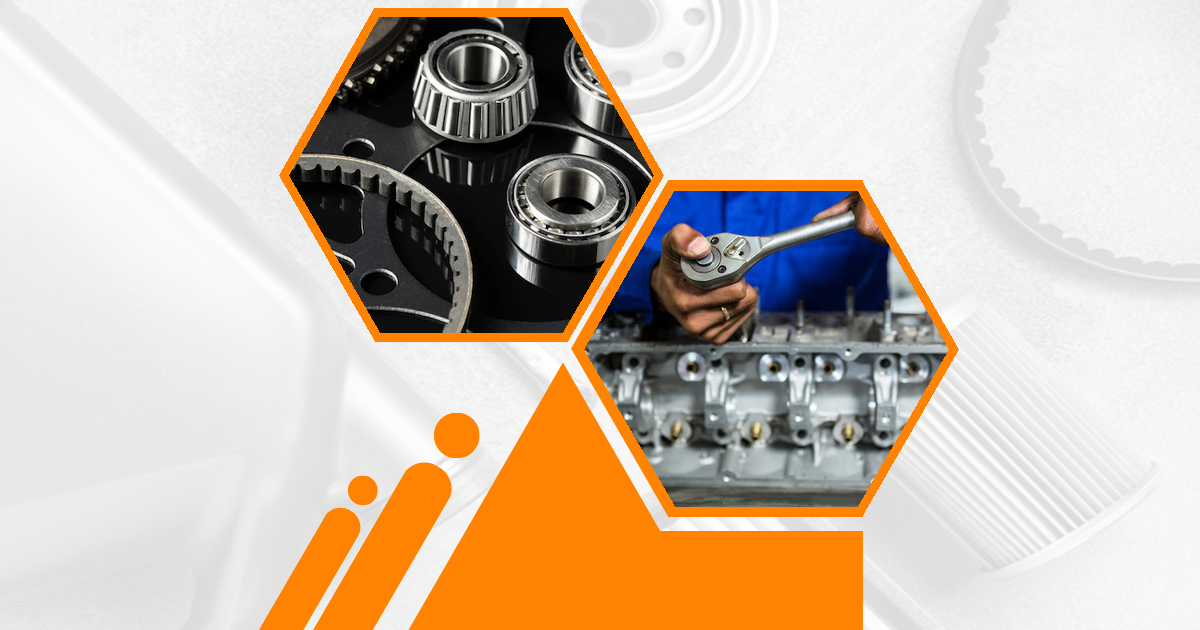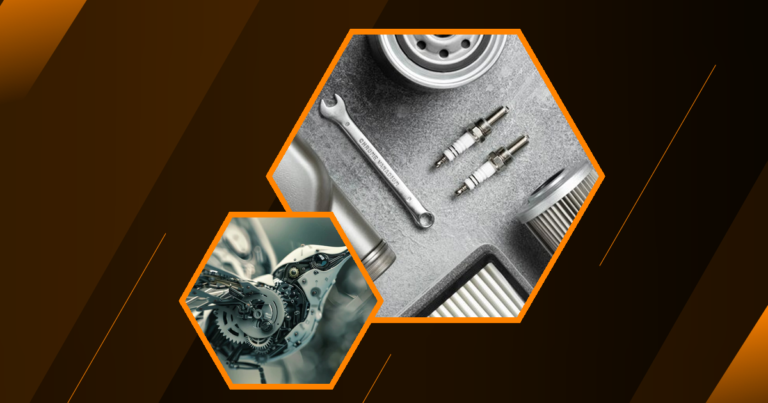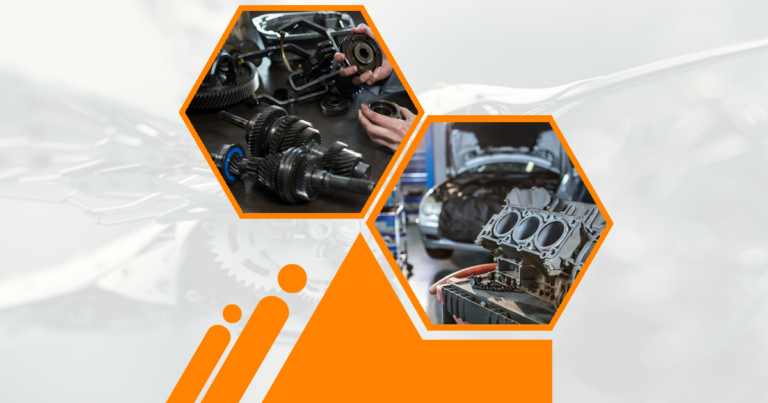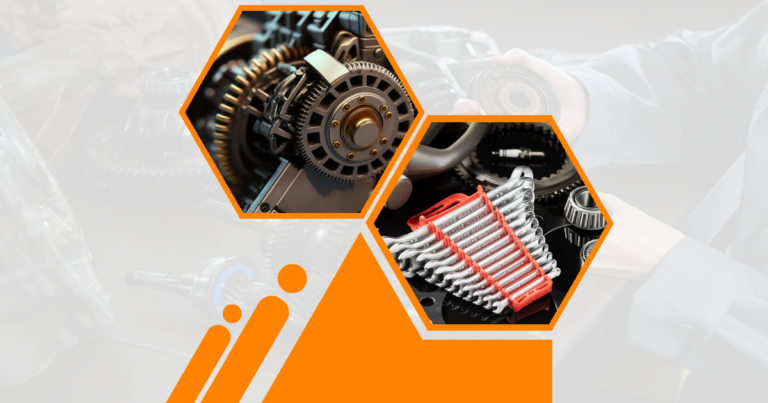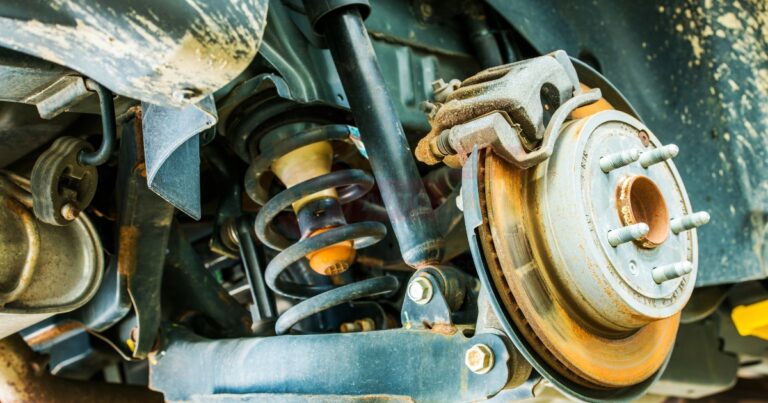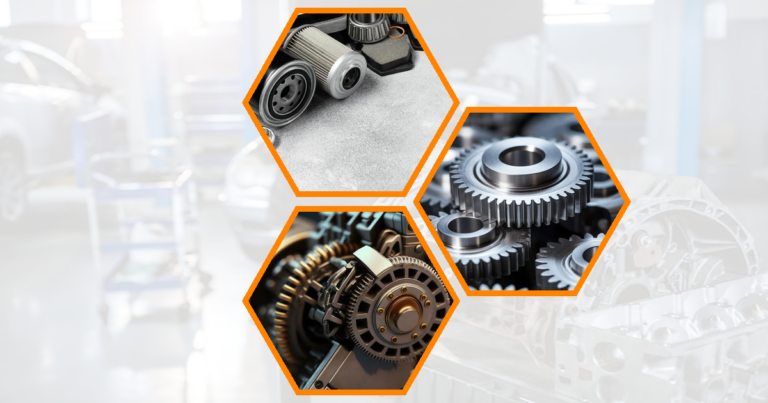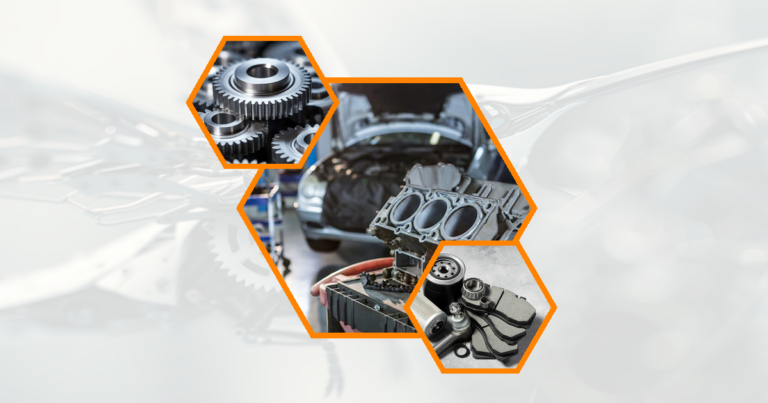A spark-ignition engine is an internal combustion engine where the fuel-air mixture is ignited bya spark plug. This type of engine is widely used in automobiles, motorcycles, and small power equipment. The basic principle involves compressing a mixture of fuel and air in a cylinder, then igniting it with an electric spark to produce power.
Spark-ignition engines operate on the principle of the Otto cycle, named after Nikolaus Otto, who invented this engine type in 1876. The cycle consists of four main stages: intake, compression, power, and exhaust.
Key Components of Spark-ignition
Key components of spark-ignition engines:
- Spark plug
- Combustion chamber
- Piston
- Crankshaft
- Valves
Comparison with Compression-Ignition Engines
Spark-ignition engines differ from compression-ignition engines (diesel engines) in several ways:
- Ignition method: Spark-ignition engines use a spark plug, while diesel engines rely on high compression to ignite the fuel.
- Fuel type: Spark-ignition engines typically use gasoline, while diesel engines use diesel fuel.
- Compression ratio: Spark-ignition engines generally have lower compression ratios than diesel engines.
Feature | Spark-Ignition Engine | Compression-Ignition Engine |
Ignition | Spark plug | High compression |
Fuel | Gasoline | Diesel |
Compression ratio | Lower (8:1 to 12:1) | Higher (14:1 to 25:1) |
Efficiency | Generally lower | Generally higher |
Parts of a Spark Ignition Engine
Engine Block and Cylinder Head
The engine block and cylinder head form the foundation of a spark-ignition engine. The engine block houses the cylinders, crankshaft, and other critical components. The cylinder head sits atop the engine block and contains the combustion chambers, valves, and spark plugs.
Key features of the engine block and cylinder head:
- Durability to withstand high temperatures and pressures
- Precision-machined surfaces for proper sealing
- Cooling passages for heat dissipation
Pistons, Connecting Rods, and Crankshaft
These components work together to convert the energy from combustion into mechanical motion:
- Pistons: Move up and down within the cylinders, driven by combustion pressure
- Connecting rods: Link the pistons to the crankshaft
- Crankshaft: Converts the reciprocating motion of the pistons into rotational motion
The design of these parts is crucial for engine performance, efficiency, and durability. AM Autoparts offers a wide range of high-quality replacement components for these critical engine parts.
Valvetrain Components
The valvetrain controls the flow of air and fuel into the engine and the exhaust gases out of the engine. Key components include:
- Camshaft
- Valves (intake and exhaust)
- Valve springs
- Rocker arms
- Pushrods (in some designs)
Proper maintenance of valvetrain components is essential for optimal engine performance and fuel efficiency.
Fuel Injection System
Modern spark-ignition engines use fuel injection systems to deliver precise amounts of fuel to the engine. This system includes:
- Fuel injectors
- Fuel pump
- Fuel pressure regulator
- Electronic control unit (ECU)
Fuel injection has largely replaced carburetors in modern engines due to its superior efficiency and emissions control.
Ignition System
The ignition system provides the spark that ignites the fuel-air mixture. Components include:
- Spark plugs
- Ignition coils
- Distributor (in older systems)
- Crankshaft position sensor
- ECU (for controlling ignition timing)
Regular maintenance of the ignition system, including spark plug replacement, is crucial for optimal engine performance.
How Does a Spark Ignition Engine Work?
Four-Stroke Cycle Explained
The four-stroke cycle is the fundamental operating principle of most spark-ignition engines:
- Intake stroke: The piston moves down, drawing in the fuel-air mixture.
- Compression stroke: The piston moves up, compressing the mixture.
- Power stroke: The spark plug ignites the mixture, driving the piston down.
- Exhaust stroke: The piston moves up, expelling the exhaust gases.
This cycle repeats continuously during engine operation, with each cylinder firing in a specific sequence.
Fuel-Air Mixture Preparation
Proper fuel-air mixture preparation is crucial for efficient combustion:
- In port fuel injection systems, fuel is injected into the intake port.
- In direct injection systems, fuel is injected directly into the combustion chamber.
- The air-fuel ratio is carefully controlled by the engine management system.
Optimal air-fuel ratios typically range from 12:1 to 18:1, depending on operating conditions.
Combustion Process
The combustion process in a spark-ignition engine involves:
- Spark ignition of the compressed fuel-air mixture
- Flame propagation through the combustion chamber
- Rapid pressure increase, driving the piston downward
Factors affecting combustion efficiency:
- Spark timing
- Fuel quality
- Combustion chamber design
- Air-fuel ratio
Power Generation and Transmission
The power generated by the engine is transmitted to the vehicle’s wheels through:
- Crankshaft rotation
- Flywheel
- Transmission
- Driveshaft or axles
Engine power output is typically measured in horsepower or kilowatts.
Applications of Spark Ignition Engines
Automotive Industry
Spark-ignition engines are the most common type of engine used in passenger vehicles. They power a wide range of vehicles, from compact cars to large SUVs. The automotive industry continues to improve spark-ignition engine technology to meet increasingly stringent emissions and fuel efficiency standards.
Key applications in the automotive sector:
- Passenger cars
- Light-duty trucks
- Performance vehicles
Motorcycles and Small Vehicles
Spark-ignition engines are ideal for motorcycles and small vehicles due to their compact size and high power-to-weight ratio. These engines are found in:
- Motorcycles of all sizes
- Scooters
- All-terrain vehicles (ATVs)
- Snowmobiles
Marine Engines
Many recreational boats and personal watercraft use spark-ignition engines. These marine applications benefit from the engine’s reliability and performance characteristics. Common uses include:
- Outboard motors
- Inboard engines for speedboats
- Jet skis and personal watercraft
Portable Power Equipment
Spark-ignition engines are widely used in portable power equipment due to their compact size and ease of operation. Applications include:
- Lawnmowers
- Chainsaws
- Portable generators
- Leaf blowers
These engines provide a good balance of power and portability for various outdoor and construction tasks.
Advantages of Spark Ignition Engines
High Power-to-Weight Ratio
Spark-ignition engines offer an excellent power-to-weight ratio, making them ideal for applications where weight is a critical factor. This advantage is particularly beneficial in:
- Sports cars and high-performance vehicles
- Motorcycles and small vehicles
- Aviation applications (small aircraft)
The high power-to-weight ratio contributes to better acceleration and overall vehicle performance.
Smooth Operation and Low Vibration
Spark-ignition engines are known for their smooth operation and relatively low vibration levels. This characteristic is due to:
- Even combustion process
- Balanced design of engine components
- Lower compression ratios compared to diesel engines
The smooth operation enhances driver and passenger comfort in automotive applications.
Quick Start-up and Responsiveness
Spark-ignition engines offer quick start-up times and responsive performance. This is particularly advantageous in:
- Cold weather conditions
- Stop-and-go traffic situations
- Applications requiring rapid power delivery
The quick start-up and responsiveness contribute to a better overall driving experience.
Disadvantages of Spark Ignition Engines
Lower Fuel Efficiency Compared to Diesel
One of the main drawbacks of spark-ignition engines is their generally lower fuel efficiency compared to diesel engines. This is due to:
- Lower compression ratios
- Higher pumping losses
- Less energy-dense fuel (gasoline vs. diesel)
However, advancements in technology, such as direct injection and turbocharging, are helping to narrow this efficiency gap.
Higher Emissions in Some Cases
Spark-ignition engines can produce higher emissions of certain pollutants compared to diesel engines:
- Higher carbon monoxide (CO) emissions
- Potentially higher hydrocarbon (HC) emissions
Modern emission control technologies, such as catalytic converters and advanced engine management systems, have significantly reduced these emissions.
Maintenance Requirements
Spark-ignition engines typically require more frequent maintenance compared to diesel engines:
- Regular spark plug replacements
- More frequent oil changes
- Potential for carbon buildup in direct injection systems
Proper maintenance is crucial for ensuring optimal performance and longevity of spark-ignition engines.
Spark Ignition Engine Efficiency Fundamentals
Thermodynamic Factors
The efficiency of spark-ignition engines is governed by several thermodynamic factors:
- Compression ratio: Higher compression ratios generally lead to improved efficiency.
- Air-fuel ratio: Optimal ratios vary depending on operating conditions.
- Combustion chamber design: Affects flame propagation and heat transfer.
Engineers continually work to optimize these factors to improve engine efficiency while maintaining performance and emissions standards.
Valve-Event Modulation
Valve-event modulation is a technique used to improve engine efficiency by optimizing the timing and duration of valve openings. This can be achieved through:
- Variable valve timing (VVT) systems
- Camless valve actuation
- Multi-valve designs
These technologies allow for better control of the air-fuel mixture and exhaust gas flow, leading to improved efficiency across a wide range of operating conditions.
Gasoline Direct Injection Technology
Gasoline direct injection (GDI) technology has significantly improved the efficiency of spark-ignition engines. Benefits of GDI include:
- More precise fuel metering
- Improved fuel atomization
- Charge cooling effect
GDI allows for higher compression ratios and more efficient combustion, contributing to better fuel economy and performance.
Advanced Spark Ignition Engine Technologies
Downsized Engines with Turbocharging
Engine downsizing combined with turbocharging is a popular trend in modern spark-ignition engine design. This approach offers:
- Improved fuel efficiency
- Reduced emissions
- Maintained or improved performance
Turbocharging allows smaller engines to produce power comparable to larger naturally aspirated engines, while consuming less fuel under normal driving conditions.
Homogeneous-Charge Compression Ignition
Homogeneous-Charge Compression Ignition (HCCI) is an advanced combustion technology that combines elements of both spark-ignition and compression-ignition engines. HCCI offers:
- Improved fuel efficiency
- Lower emissions
- Challenges in controlling combustion timing
While still in development, HCCI technology shows promise for future spark-ignition engine designs.
Ethanol Direct Injection
Ethanol direct injection is a technology that allows spark-ignition engines to take advantage of ethanol’s high octane rating and cooling properties. Benefits include:
- Increased power output
- Improved efficiency
- Reduced knock tendency
This technology is particularly relevant in markets where ethanol fuel is widely available.
Engine Friction Reduction Efforts
Lubricant Improvements
Advanced lubricants play a crucial role in reducing engine friction and improving efficiency. Modern lubricants offer:
- Better viscosity characteristics
- Improved thermal stability
- Enhanced wear protection
These improvements contribute to reduced friction losses and increased engine longevity.
Surface Treatments and Coatings
Innovative surface treatments and coatings are being applied to engine components to reduce friction:
- Diamond-like carbon (DLC) coatings
- Plasma-sprayed cylinder liners
- Nano-scale surface texturing
These technologies can significantly reduce friction between moving parts, improving efficiency and durability.
Design Optimizations
Engine designers are constantly working to optimize component designs for reduced friction:
- Lightweight pistons and connecting rods
- Low-tension piston rings
- Roller bearings for camshafts and other components
These design optimizations contribute to overall engine efficiency improvements.
Spark Ignition Engine Heat Management
Cooling System Design
Effective cooling system design is crucial for maintaining optimal engine performance and efficiency:
- Advanced radiator designs
- Electric water pumps for precise flow control
- Improved coolant formulations
Proper heat management ensures consistent performance and prevents damage from overheating.
Thermal Efficiency Improvements
Improving thermal efficiency is a key focus in modern engine design:
- Optimized combustion chamber geometry
- Advanced materials for better heat retention
- Exhaust gas recirculation (EGR) systems
These improvements help extract more useful energy from the fuel, increasing overall engine efficiency.
Waste Heat Recovery Systems
Waste heat recovery systems aim to capture and utilize heat that would otherwise be lost:
- Thermoelectric generators
- Rankine cycle systems
- Turbocompound technology
While still in development for many applications, these systems show promise for further improving engine efficiency.
Future Trends in Spark Ignition Engine Development
Hybridization and Electrification
The integration of electric powertrains with spark-ignition engines is a growing trend:
- Mild hybrid systems
- Full hybrid powertrains
- Plug-in hybrid electric vehicles (PHEVs)
These technologies allow for improved efficiency and reduced emissions while maintaining the familiarity and range of conventional engines.
Alternative Fuels Compatibility
Future spark-ignition engines are being designed to accommodate a wider range of fuels:
- Ethanol and other biofuels
- Natural gas and propane
- Hydrogen
Flexibility in fuel compatibility will be crucial as the automotive industry transitions towards more sustainable energy sources.
Emissions Reduction Technologies
Ongoing development of emissions reduction technologies is essential for meeting future regulations:
- Advanced catalytic converters
- Particulate filters for direct injection engines
- Low-temperature combustion strategies
These technologies aim to further reduce harmful emissions while maintaining engine performance and efficiency.
Maintenance Tips for Spark Ignition Engines
Regular Oil Changes and Lubrication
Proper lubrication is crucial for the longevity and performance of spark-ignition engines:
- Follow manufacturer-recommended oil change intervals
- Use the correct grade and type of oil
- Check oil levels regularly
AM Autoparts offers a wide range of high-quality engine oils and filters to keep your engine running smoothly.
Spark Plug Replacement
Regular spark plug replacement is essential for optimal engine performance:
- Replace spark plugs according to the manufacturer’s schedule
- Use the correct type of spark plug for your engine
- Ensure proper gap setting when installing new plugs
Worn spark plugs can lead to poor fuel economy, reduced performance, and potential engine damage.
Fuel System Cleaning
Maintaining a clean fuel system is important for engine efficiency and longevity:
- Use quality fuel from reputable sources
- Add fuel system cleaners periodically
- Replace fuel filters as recommended
A clean fuel system ensures proper fuel delivery and helps prevent performance issues.
Troubleshooting Common Spark Ignition Engine Issues
Misfires and Ignition Problems
Misfires and ignition issues can significantly impact engine performance:
- Check for worn or faulty spark plugs
- Inspect ignition coils and wiring
- Verify proper fuel delivery
Addressing these issues promptly can prevent more serious engine problems.
Fuel Delivery Issues
Problems with fuel delivery can lead to poor performance and efficiency:
- Check for clogged fuel injectors
- Inspect the fuel pump and pressure regulator
- Look for vacuum leaks in the intake system
Proper fuel delivery is essential for optimal engine operation.
Compression Loss
Loss of compression can result in reduced power and efficiency:
- Perform a compression test to identify weak cylinders
- Check for worn piston rings or cylinder walls
- Inspect valves and valve seats for proper sealing
Addressing compression issues can restore engine performance and prevent further damage. Efficient automotive distribution helps car companies get their vehicles to dealerships quickly and cheaply Supplier network synergy Working together with different suppliers to make things better and save money for everyone in the group
Vehicle direction controller The Automotive fraud prevention helps stop people from cheating when buying or selling cars It protects both buyers and sellers from tricks and scams in the car business
Crankshaft camshaft differentiation A crankshaft turns the up-and-down motion of pistons into spinning motion while a camshaft controls the opening and closing of engine valves Camshaft valve timing controls when engine valves open and close This timing affects how well the engine breathes and performs
Vibration dampening mechanisms help reduce shaking and noise in machines and vehicles These devices make things run more smoothly and quietly by absorbing unwanted movement Brake components compared Different parts of brakes are looked at side by side to see how they work and which ones are better for different types of cars and driving needs
Environmental Impact of Spark Ignition Engines
Emissions Regulations
Spark-ignition engines are subject to increasingly stringent emissions regulations:
- Carbon dioxide (CO2) limits
- Nitrogen oxides (NOx) restrictions
- Particulate matter controls
Manufacturers must continually innovate to meet these evolving standards while maintaining performance and efficiency.
Catalytic Converters and Aftertreatment Systems
Advanced aftertreatment systems play a crucial role in reducing emissions:
- Three-way catalytic converters
- Gasoline particulate filters (GPFs)
- Selective catalytic reduction (SCR) systems
These technologies significantly reduce harmful emissions from spark-ignition engines.
Fuel Economy Improvements
Improving fuel economy is a key focus for reducing the environmental impact of spark-ignition engines:
- Advanced combustion strategies
- Lightweight materialsne?
FAQs
What is the difference between spark ignition and compression ignition engines?
Spark ignition engines ignite the air-fuel mixture using a spark plug, while compression ignition engines rely on high compression to ignite the fuel.
Can a spark ignition engine run on diesel fuel?
No, spark ignition engines are designed for gasoline, not diesel, due to differences in fuel properties and ignition methods.
How often should spark plugs be replaced in a spark ignition engine?
Spark plugs should typically be replaced every 30,000 to 100,000 miles, depending on the vehicle and plug type. Check your owner’s manual for specific recommendations.
